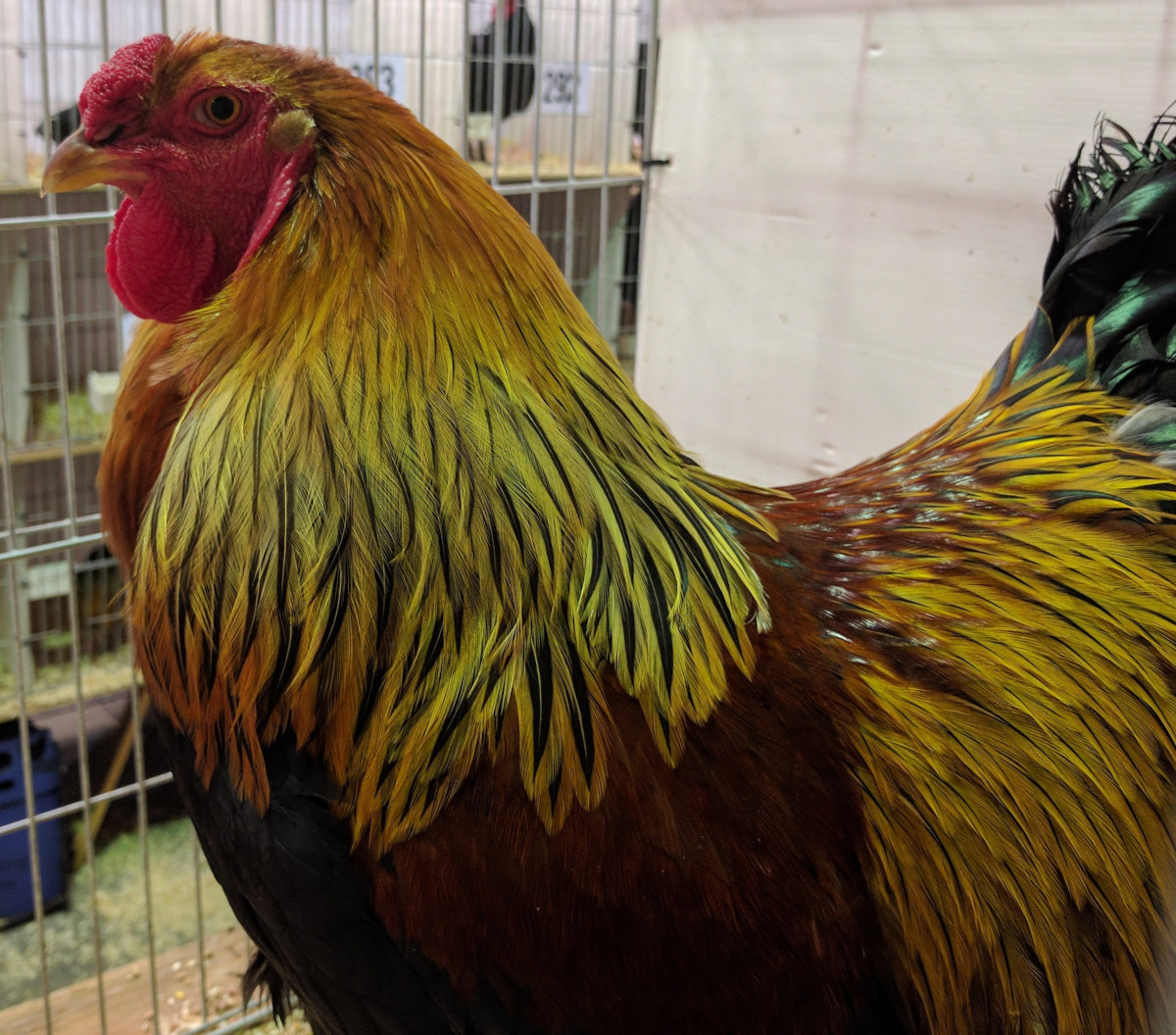Brahma breed standards

The Brahma chicken breed standard is a set of guidelines that describe the ideal appearance and characteristics of a Brahma chicken. The standard is used by breeders to evaluate their birds and to ensure that they are purebred and of good quality.
In the USA it is known as the standards of perfection, and called the breed standards in the UK. Brahma are recognised by the American Poultry Association (APA) in three varieties; Light, Dark, and Buff. In the UK an some other parts of the world there are other colours and patterns allowed.
Below: A drawing of the ideal Brahma from 1902.

The Brahma is a large chicken breed that was originally developed in America. They are known for their large size, feathered legs, and docile temperament. Brahmas are often used as show birds, but they are also good foragers and make excellent backyard chickens.
Below: A poultry judge assessing a Brahma at a show.
The Brahma chicken breed originated in the United States in the mid-1800s. They were developed from a mix of Chinese Shanghai and Malay breeds, and were first exhibited in the United States in 1852. It wasn't until 1874 that the Brahma chicken breed standards were established by the American Poultry Association (APA), which is still the governing body for poultry standards in the United States today.
The Brahma breed standard is as follows:
- Size: Brahmas are large chickens, with cocks weighing in at 10-12 pounds and hens weighing in at 8-10 pounds. Up to 30 inches tall.
- Body: Brahma chickens have a broad, deep body with a wide breast and a full, rounded tail.
- Feathering: Brahmas have a lot of feathering, including on their legs and feet. This feathering helps to keep them warm in cold weather.
- Plumage: Smooth and fitting.
- Head: A broad and wide head with skull projecting over the eyes, termed a “beetle brow”. Their heads are small in proportion to their body size.
- Comb: Brahmas have a pea comb, which is a small, single comb that is set low on the head.
- Wattles: Brahmas have small, red wattles that hang down from the sides of their heads.
- Earlobes: Brahmas have red earlobes that are oval-shaped and smooth.
- Eyes: Brahmas have reddish-brown eyes.
- Beak: Brahmas have a yellow beak that is short and stout.
- Legs: Brahmas have yellow legs that are feathered down to the toes. Their feathered legs appear like a narrow “V” if viewed from the side.
- Toes: Brahmas have four toes on each foot, with three toes pointing forward and one toe pointing backward.
- Tail: Brahmas have a long, full tail that is carried high.
- Plumage: Brahmas come in a variety of colours, including black, buff, blue, and white.
- Temperament: Brahmas are known for their docile temperament. They are gentle and make good pets.
Brahma chickens are a popular choice for poultry shows and competitions, and their unique appearance and large size make them stand out from the crowd.
Faults in the Brahma chicken:
Unwanted characteristics in the Brahma include:
- Crooked or rounded back,
- Any bodily deformity,
- Bent, twisted, split or wry tails,
- White or pink legs,
- Legs not feathered to the toe.
If you are interested in raising Brahma chickens, it is important to find a reputable breeder who can provide you with healthy, purebred birds. You should also be prepared to provide your Brahmas with a large coop and plenty of space to roam.
